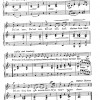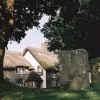Joseph Damer, Lord Milton of Milton Abbey, could hardly be numbered among Dorset’s more kindly, considerate or philanthropic squires. The Damers were a gentry family of considerable wealth, but Joseph was a man of ambition and ruthlessness. In 1752, only ten years after his marriage to Caroline Sackville, daughter of the first Duke of Dorset, he acquired Milton Abbey. He immediately set about re-configuring the estate’s landscape to his own egocentric tastes, even evicting the inhabitants of the old village upon expiry of their leases and re-settling them in a purpose-built village (today’s Milton Abbas,) so that time-honoured cottages of old Milton could be flooded by an enormous ornamental lake.
John Damer was the first of Joseph and Caroline’s four children and like his father he married well by 18th century standards. His bride was Anne Seymour Conway, 18-year-old daughter of the Rt Hon Henry Seymour Conway, a prominent soldier, statesman, MP and one-time Governor of Jersey. Anne’s fortune was around £10,000, and the couple received an annuity of £5,000 from Lord Milton. At first the younger Damers made the most of their riches, but it soon became apparent that their marriage was faltering. Anne was increasingly spending more time away from home socialising at parties and entertainment than at home with John. But according to Anne’s biographer Percy Noble, her husband took some share of the responsibility for the marital difficulties himself, caused by addictions to the gaming table and turf, which he had to fund by means of loans from Jewish financiers. This made Damer difficult to live with, yet his shortcomings did not restrain him from complaining that his wife was constantly away from home!
Although heir to a fortune of about £30,000 a year, Damer’s debts were mounting. Falling in with a wild, spendthrift set of gad-abouts frequenting London, he seemed to find some curious satisfaction in annoying Anne. In 1775 she duly returned from a visit to Paris and publicly announced her separation from John – no easy commitment for a woman of her “refined and delicate temperament.” By summer 1776 Damer was in the red by £70,000, a fortune that his despotic father refused to bail him out for, since the latter was already saddled with paying off gambling debts incurred by John’s two younger brothers, a burden that was eating into the Milton estate balances.
On the night of August 15th that year Damer happened to be lodging at the Bedford Arms tavern, Covent Garden. By 3 a.m. in the morning, receiving no answer from Damer’s room a blind fiddler called Burnet alerted Bedford Arms landlord John Robinson, saying he had been disturbed by a peculiar smell in Damer’s chamber. Robinson was soon to discover that the odour was not, as supposed, due to burning by a spilt candle, but cordite from a fired pistol. The heir to Milton Abbey House was slumped in a chair, blood pouring from a wound to his right temple. On the floor between his feet lay a gun with the cocking hammer closed.
An inquest was convened in the inn at 6 p.m. the same day. Coroner Thomas Prickard and a 22-man jury heard evidence from Robinson, Burnet, and John Armitage, Damer’s house steward. Robinson testified that Damer had been a regular customer at the Bedford for a number of years and that he had received an order for supper from him between 7 and 8 o’clock the previous evening, together with a request for Burnet and four women to entertain him. The landlord further stated that, although the note was not the first he had received from Damer, this one differed from the rest in that it was written in a “confused manner” out of character with his usual style. Soon after 11 p.m. Damer, Burnet and the ladies retired to an upstairs room where the fiddler played and the four women sung, though it was noted that Damer ate little of his supper. The group broke up shortly before 3 a.m. when Damer told his steward to dismiss the women.
Burnet then gave an account of his movements from the time he arrived at the inn to when he went to call Damer in his room, received no reply from within, and noticed the smell he took to be a spilt candle. He then informed Mr Robinson who upon reaching the room exclaimed, “Oh my God – he has shot himself!” Armitage made only a brief statement about his service with Damer and that he (Damer) had lent him £26. 5s just two days before. The jury had little difficulty in reaching a verdict of instant death due to suicide while “not being of sound mind…but lunatic and distracted.”
Did John Damer really die by his own hand in the Bedford Arms that August night? Certainly the inquest made some glaring omissions. For example there is no record of a pistol shot ever being heard, and it was found that the shot had not entered Damer’s head. Nor was there any mention of an apparent suicide note left on a table nearby. No witnesses who could testify to Damer’s monetary predicament were called. In fact, only Robinson and Armitage were in a position to identify the body (since Burnet could not see.) It would not have been impossible therefore, for these two witnesses to collaborate in a conspiracy hatched by Damer to fake his own death. This is not as far-fetched as it first appears, for in the London of the time it would have been relatively easy to “borrow” a corpse to be returned later.
For the dispossessed cottagers of Milton Abbas however, it was a virtual certainty that word of the Milton heir’s demise would set the rumour mill turning in favour of the fake-death theory. News of the death sent shock waves through England’s high society, but for villagers embittered by the fragmentation of their centuries-old community, a presumption of faking death to avoid remunerating creditors was bound to arise. It was likely they considered the son to be the same as his despised father and so entirely capable of such a devious plot, although there was never strong evidence to substantiate it.
The fake suicide rumour may have stayed just that indefinitely: a rumour, were it not for an astonishing discovery made 97 years later on the villagers own doorstep. About 1837 some repairs to the north transept of Milton Abbey were in progress, which necessitated opening the Damer family crypt. At the time a man called Frederick Fane of Moyles Court, Fordingbridge was staying at the Abbey when one morning he decided to visit the ancient building to look in on the repair work. While there the foreman, with whom Fane had entered into conversation, alluded to a “fake funeral” having taken place nearly a century before when the Abbey was Milton Parish Church. An extravagant son of Lord Milton, he said, was being sought by the bailiffs when a message arrived stating that the man had died on the continent and was to be brought back for burial here at the Abbey. The foreman then invited the visitor to “see something that would convince him of the truth of the Damer legend.”
Down in the vault the two men stopped beside a coffin with a plate bearing Damer’s name. Fane was then bizarrely invited to attempt to lift the coffin, but on doing so found it was too heavy. When asked to try to lift the coffin beside it, however, he was surprised to find that one could be lifted easily without any exertion. What was the explanation for the difference?
As the foreman explained, the second coffin was much lighter because its body had decomposed, but the first coffin could not be lifted because it had been filled with stones. Here there was hint of a strong vindication of the villager’s suspicions if the opportunity for access to the vault and inspection of remains ever arose. More than 20 years later Fane related his extraordinary experience to a meeting of the Dorset Natural History and Field Club.
If Damer, then, had not faked his suicide, why go to the trouble of staging a fake funeral? Moreover, how do we explain the claims of villagers, who mostly never believed Damer to be dead and buried, that they had seen him alive and well in the grounds on several later occasions?
If the supposed conspiracy was intended to satisfy Damer’s creditors, then it succeeded, but Joseph Damer’s malign attitude to his son’s death provoked almost as much public shock and indignation as the news of the supposed death itself. Lord Milton even vented his spleen on poor Mrs Damer, who deserved only sympathy.
This has been a strange, though true story. But unless or until any real, rather than circumstantial evidence materialises the truth about John Damer’s fate is unlikely ever to be revealed.
As for Anne Damer, following her husband’s departure she went on to live a long and productive life, becoming a noted sculptor, continental traveller and actress on the London stage, acquainted with many royal, political, literary and artistic figures of the period. She died at the ripe old age of 80 in May 1828 and was buried near to other members of the Conway family at the parish church of Sundridge, Kent.



